Abstract
Aqueous spore suspensions of Bacillus stearothermophilus ATCC 12980 were heated at different temperatures for various time intervals in a resistometer, spread plated on antibiotic assay medium supplemented with 0.1% soluble starch without (AAMS) or with (AAMS-S) 0.9% NaCl, and incubated at 55 degrees C unless otherwise indicated. Uninjured spores formed colonies on AAMS and AAMS-S; injured spores formed colonies only on AAMS. Values of D, the decimal reduction time (time required at a given temperature for destruction of 90% of the cells), when survivors were recovered on AAMS were 62.04, 18.00, 8.00, 3.33, and 1.05 min at 112.8, 115.6, 118.3, 121.1, and 123.9 degrees C, respectively. Recovery on AAMS-S resulted in reduced decimal reduction time. The computed z value (the temperature change which will alter the D value by a factor of 10) for spores recovered on AAMS was 8.3 degrees C; for spores recovered on AAMS-S, it was 7.6 degrees C. The rates of inactivation and injury were similar. Injury (judged by salt sensitivity) was a linear function of the heating temperature. At a heating temperature of less than or equal to 118.3 degrees C, spore injury was indicated by the curvilinear portion of the survival curve (judged by salt sensitivity), showing that injury occurred early in the thermal treatment as well as during logarithmic inactivation (reduced decimal reduction time). Heat-injured spores showed an increased sensitivity not only to 0.9% NaCl but also to other postprocessing environmental factors such as incubation temperatures, a pH of 6.6 for the medium, and anaerobiosis during incubation.
Full text
PDF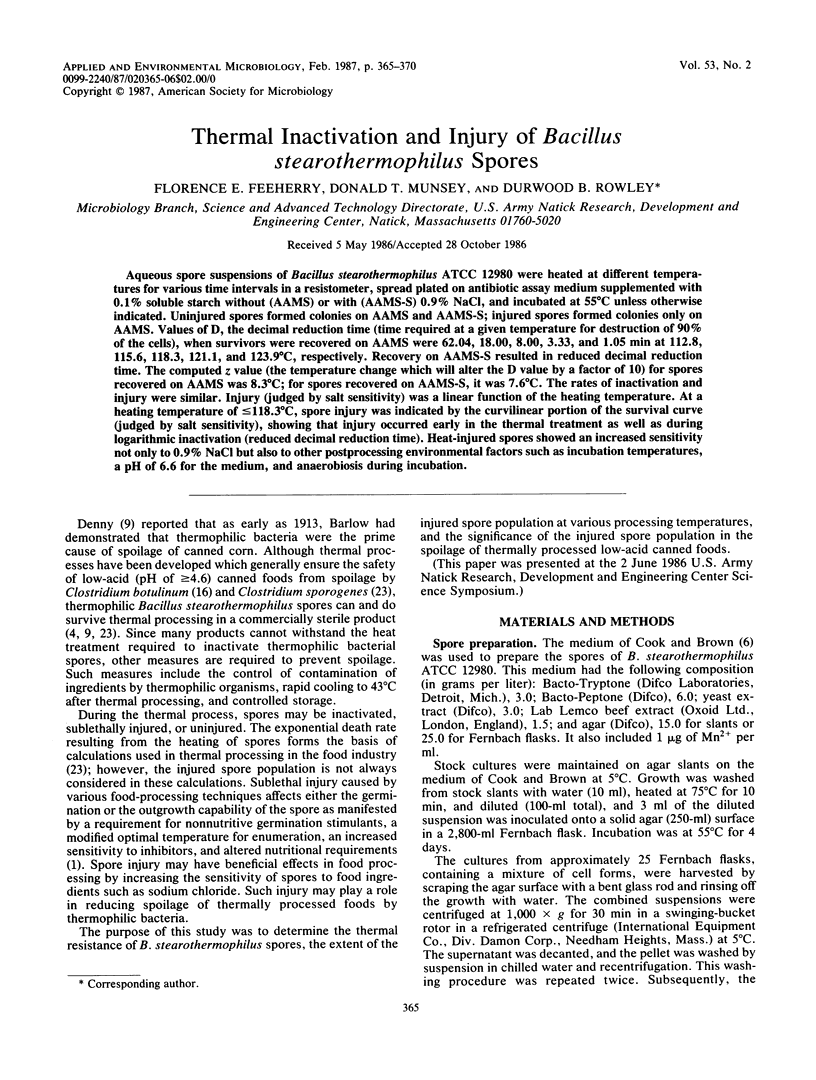
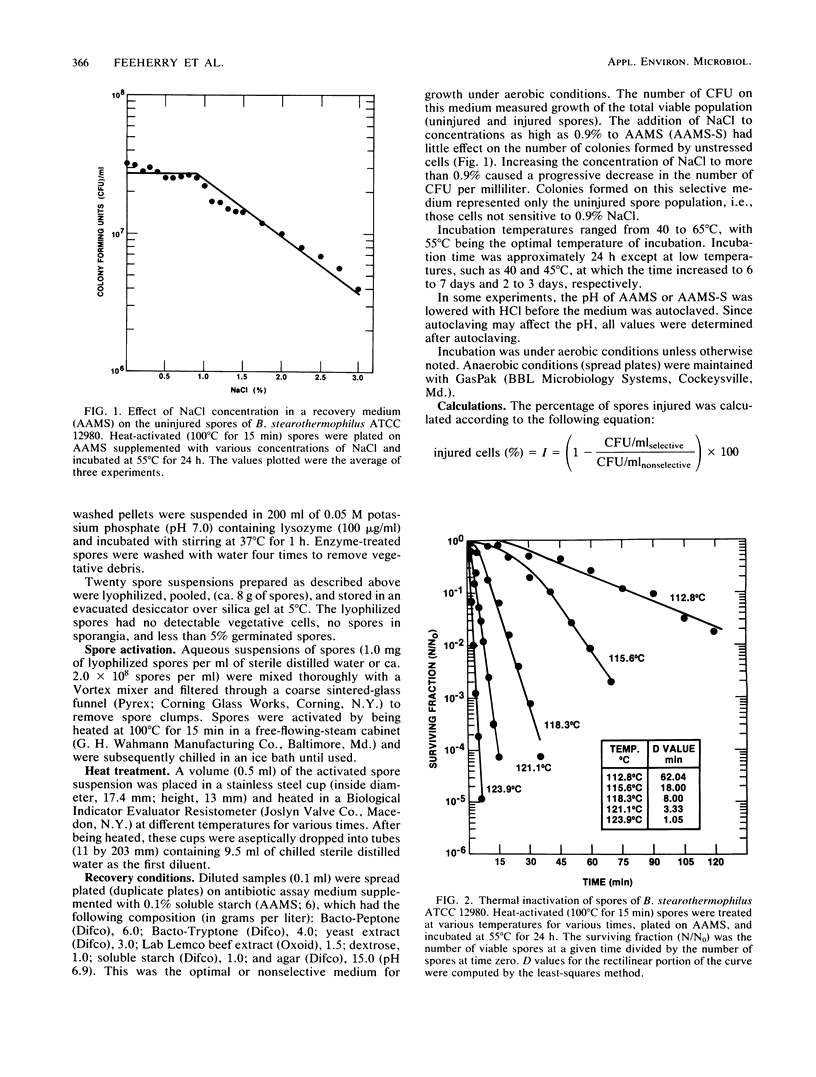
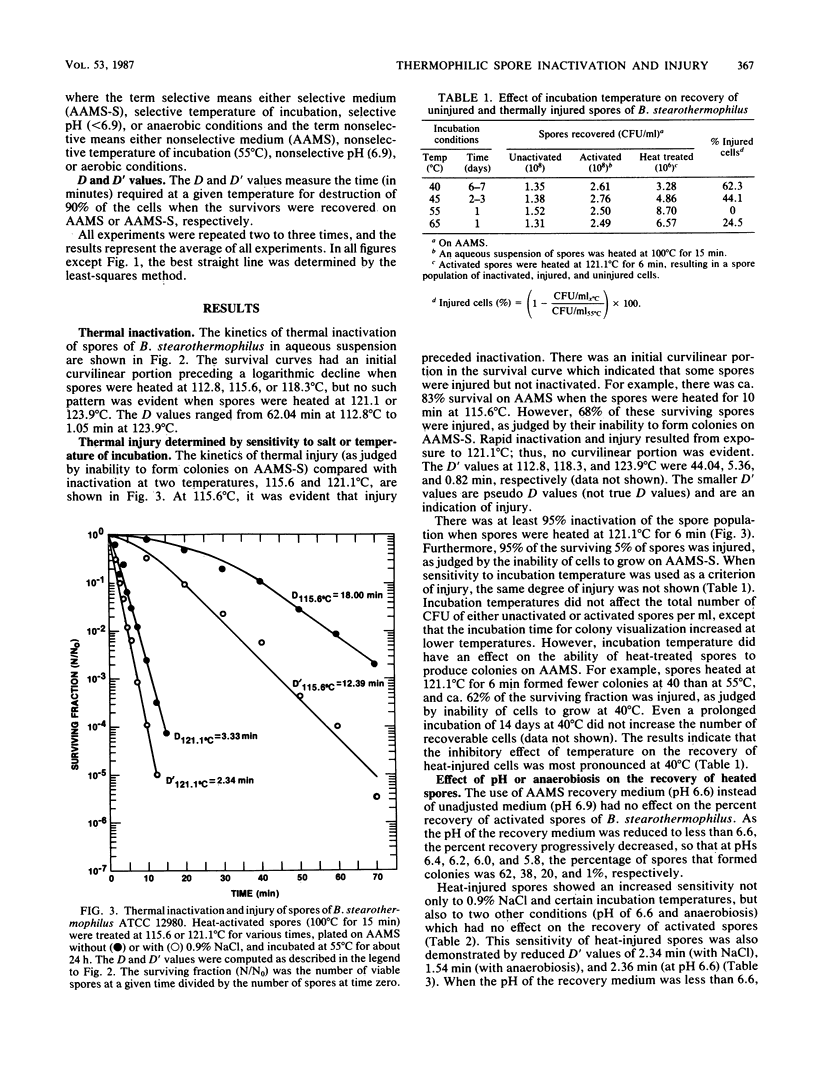
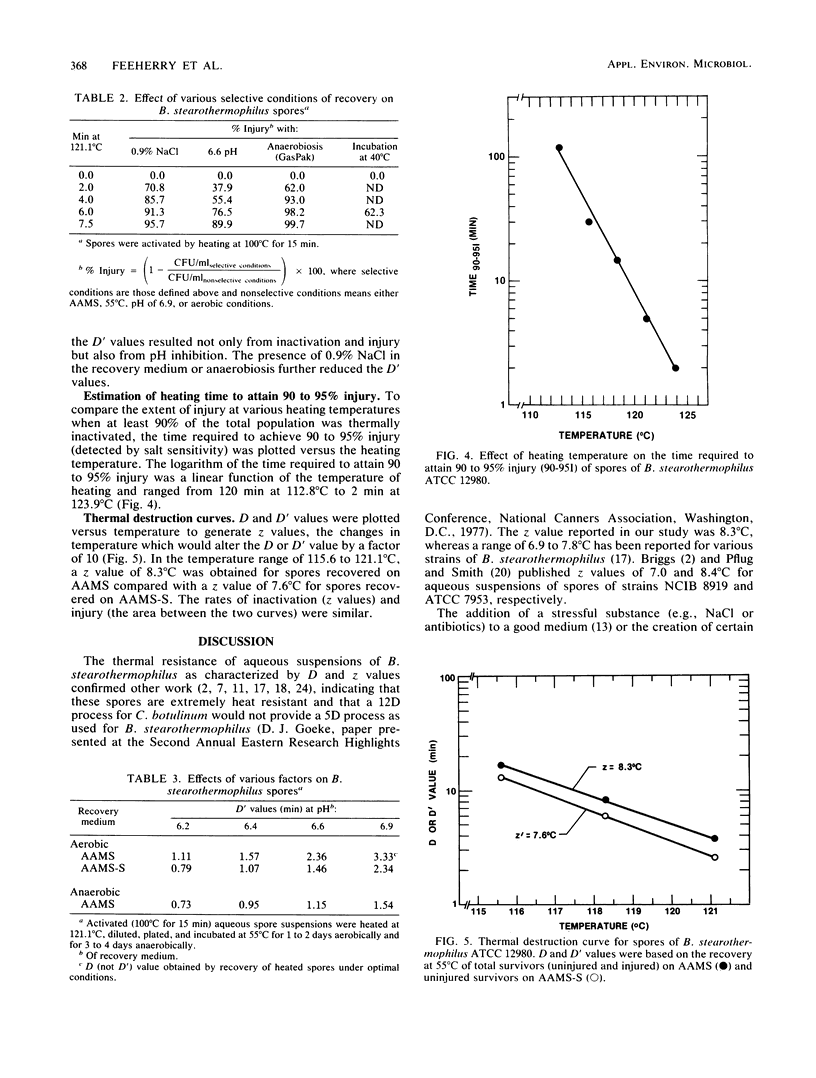
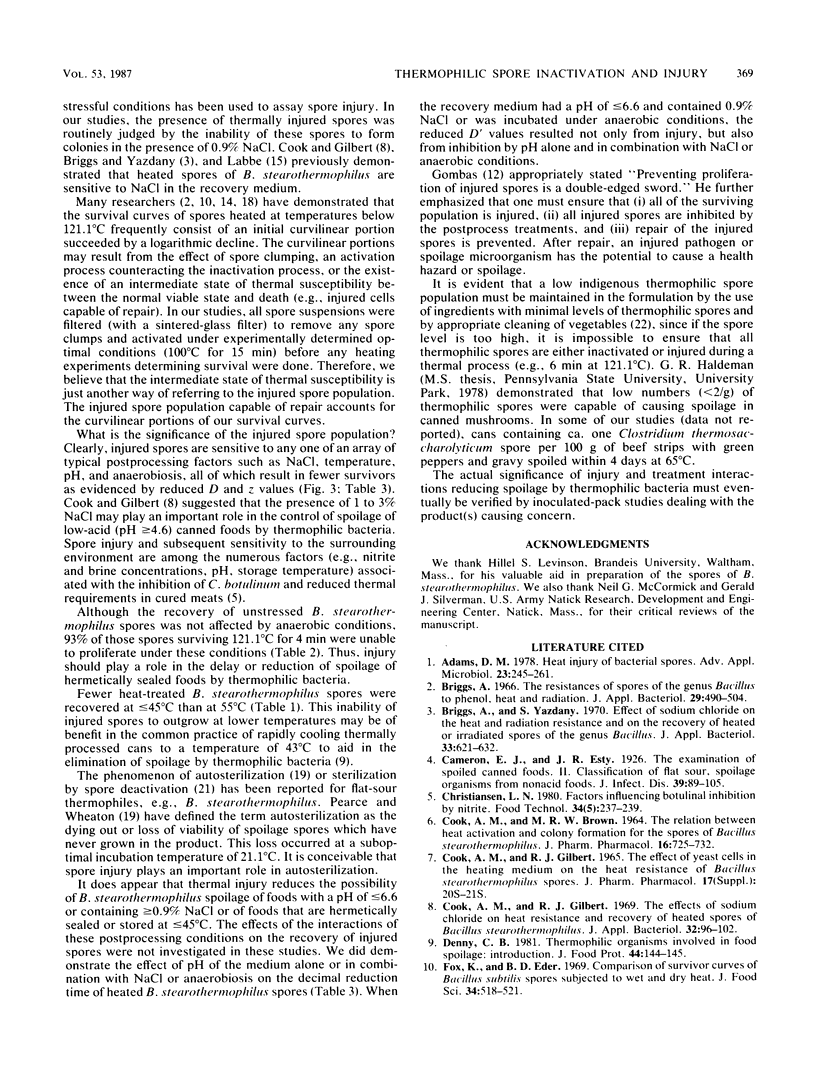
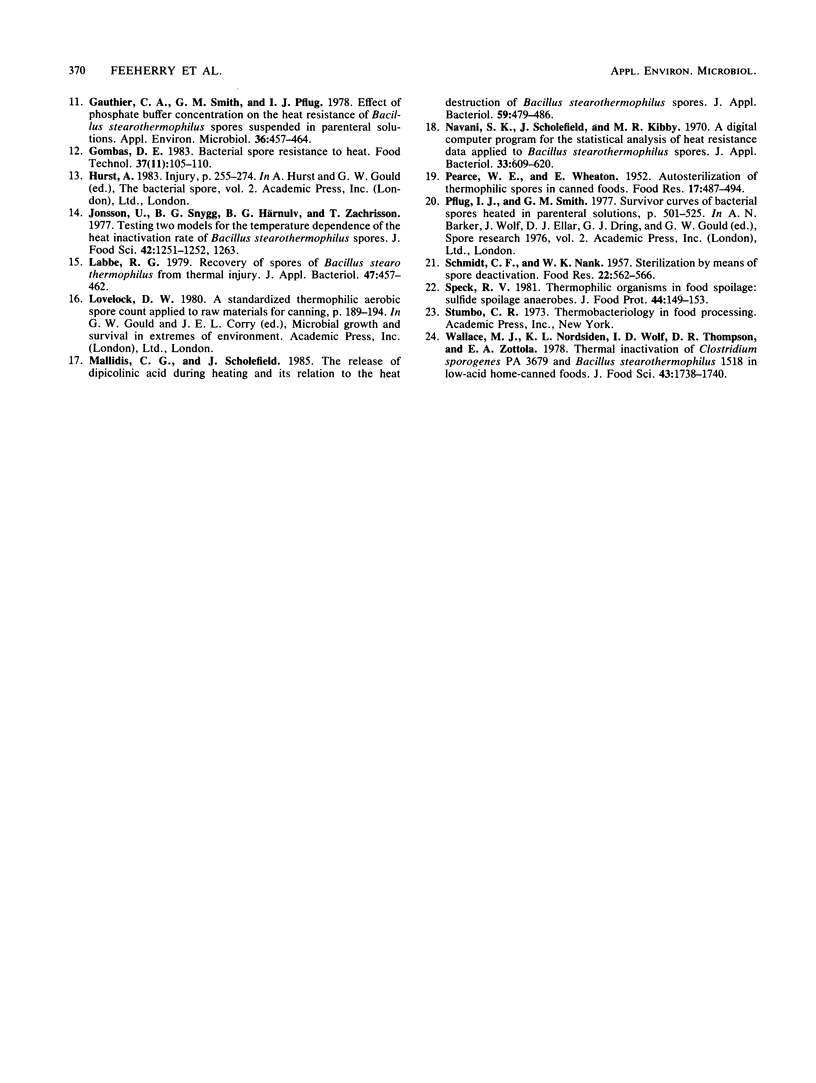
Selected References
These references are in PubMed. This may not be the complete list of references from this article.
- Adams D. M. Heat injury of bacterial spores. Adv Appl Microbiol. 1978;23:245–261. doi: 10.1016/s0065-2164(08)70072-8. [DOI] [PubMed] [Google Scholar]
- Briggs A. The resistances of spores of the genus Bacillus to phenol, heat and radiation. J Appl Bacteriol. 1966 Dec;29(3):490–504. doi: 10.1111/j.1365-2672.1966.tb03500.x. [DOI] [PubMed] [Google Scholar]
- Briggs A., Yazdany S. Effect of sodium chloride on the heat and radiation resistance and on the recovery of heated or irradiated spores of the genus bacillus. J Appl Bacteriol. 1970 Dec;33(4):621–632. doi: 10.1111/j.1365-2672.1970.tb02243.x. [DOI] [PubMed] [Google Scholar]
- COOK A. M., BROWN M. R. THE RELATION BETWEEN HEAT ACTIVATION AND COLONY FORMATION FOR THE SPORES OF BACILLUS STEAROTHERMOPHILUS. J Pharm Pharmacol. 1964 Nov;16:725–732. doi: 10.1111/j.2042-7158.1964.tb07396.x. [DOI] [PubMed] [Google Scholar]
- Cook A. M., Gilbert R. J. The effect of sodium chloride on heat resistance and recovery of heated spores of Bacillus stearothermophilus. J Appl Bacteriol. 1969 Mar;32(1):96–102. doi: 10.1111/j.1365-2672.1969.tb02193.x. [DOI] [PubMed] [Google Scholar]
- Cook A. M., Gilbert R. J. The effect of yeast cells in the heating medium on the heat resistance of Bacillus stearothermophilus spores. J Pharm Pharmacol. 1965 Dec;17:20S–21S. doi: 10.1111/j.2042-7158.1965.tb07736.x. [DOI] [PubMed] [Google Scholar]
- Gauthier C. A., Smith G. M., Pflug I. J. Effect of phosphate buffer concentration on the heat resistance of Bacillus stearothermophilus spores suspended in parenteral solutions. Appl Environ Microbiol. 1978 Sep;36(3):457–464. doi: 10.1128/aem.36.3.457-464.1978. [DOI] [PMC free article] [PubMed] [Google Scholar]
- Labbe R. G. Recovery of spores of Bacillus stearothermophilus from thermal injury. J Appl Bacteriol. 1979 Dec;47(3):457–462. doi: 10.1111/j.1365-2672.1979.tb01206.x. [DOI] [PubMed] [Google Scholar]
- Mallidis C. G., Scholefield J. S. The release of dipicolinic acid during heating and its relation to the heat destruction of Bacillus stearothermophilus spores. J Appl Bacteriol. 1985 Nov;59(5):479–486. doi: 10.1111/j.1365-2672.1985.tb03348.x. [DOI] [PubMed] [Google Scholar]
- Navani S. K., Scholefield J., Kibby M. R. A digital computer program for the statistical analysis of heat resistance data applied to Bacillus stearothermophilus spores. J Appl Bacteriol. 1970 Dec;33(4):609–620. doi: 10.1111/j.1365-2672.1970.tb02242.x. [DOI] [PubMed] [Google Scholar]


